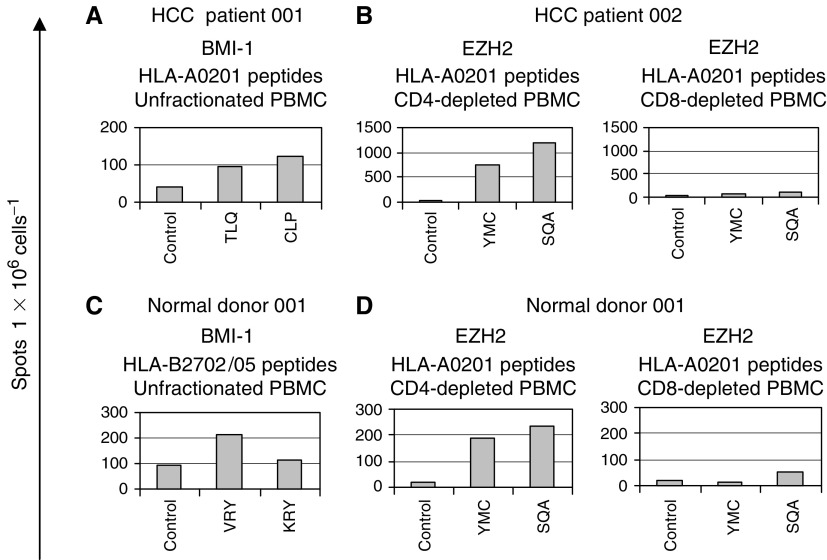Figure 3.
ELISPOT responses in patients with hepatocellular carcinoma (HCC) and normal donors to predicted CD8+ T-cell epitope peptides. Unfractionated PBMCs or CD4- and CD8-depleted responder cell populations were screened against 9-mer peptides derived from BMI-1 and EZH2 proteins predicted to bind to the HLA class I molecules HLA-A0201, HLA-B2702/05 and HLA-B4403 (Table 1) using an ELISPOT of interferon-γ release. The figure shows positive responses to the HLA-A0201-restricted BMI-1 peptides TLQDIVYKL (aa 74–82; TLQ) and CLPSPSTPV (aa 271–279; CLP) in HCC patient 001 (A), to the HLA-B2702/05-restricted BMI-1 peptides VRYLETSKY (aa 44–52; VRY) and KRYLRCPAA (aa 161–169; KRY) in normal donor 001 (C), and to the HLA-A0201-binding EZH2 peptides YMCSFLFNL (aa 666–674; YMC) and SQADALKYV (aa 734–742; SQA) in HCC patient 002 (B) and normal donor 001 (D). Peptides were added to a final concentration of 10 μg ml−1 and results obtained from background control wells containing cells and diluted DMSO are shown. Results are the mean of triplicate wells, and are expressed as the number of spots obtained per 1 × 106 cells added to each well. Standard errors were less than 10%. For depleted populations, these figures were calculated following FACS analysis after depletion.

